Web3 eCommerce is the next era of online shopping, where brands will have to adapt to the new blockchain technology in order to succeed in their online businesses. Here, we’ll focus on new technologies and tell you how to build a profitable Web3-based eCommerce website.
What is Web3?
Web3 is the term used to describe the third generation of the World Wide Web, which aims to create a fully decentralized web. It is built on blockchain technology and provides users with greater control over their data, and creates more opportunities for peer-to-peer interactions.
Web3 vs Web2
Web 3.0 is often referred to as the decentralized web, while Web2 is the centralized web. It is an evolution of the Web2 architecture, but with some significant differences. Here are some key differences between the two:
- Ownership of data: In Web2, data is generally owned by authorities like Google, Facebook, etc. In contrast, Web3 allows users to own and control their own data.
- Decentralization: In Web2, the control of the platforms is centralized, while in Web3, the platforms have no central point of control.
- Interoperability: Web3.0 is designed to be more interoperable than Web2. It ensures that different blockchain-based solutions can interact with each other and exchange data seamlessly.
- Security: Web3 aims to provide a higher level of security than the traditional Web2 by using blockchain technology and smart contracts.
Benefits of Web3 for eCommerce businesses
The technology has multiple benefits for eCommerce businesses. Let’s list the most outstanding ones.
Decentralized eCommerce
Web3 allows businesses to operate without intermediaries, thereby reducing fees and increasing profits. It also enables businesses to operate in countries with strict regulations or limited access to traditional financial systems. A Web3 decentralized eCommerce store aims to foster trust, privacy, and user empowerment while reducing barriers and intermediaries. It holds the potential to revolutionize the eCommerce industry by providing a more inclusive, secure, and transparent environment for buyers and sellers.
Trustlessnes
This term refers to the ability of a system to operate without relying on a central authority or intermediary. The technology helps leverage blockchain, which provides immutability, transparency, and cryptographic security. This enhanced level of security helps protect buyers and sellers against fraud, data manipulation, and unauthorized access. Web 3.0 enables trustless transactions, thereby reducing the risk of fraud and chargebacks. This is particularly useful for eCommerce businesses to improve customer loyalty. To fully leverage these advantages, it’s essential to hire AI developers who can integrate intelligent algorithms into your Web3 eCommerce platform.
Transparency
Web3 allows for transparent transactions that are easily traceable and auditable. This is useful for businesses that need to comply with regulatory requirements or for those that need to maintain a high level of transparency with their customers.
Improved Security
The technology provides businesses with enhanced security features, improving the overall security of their eCommerce platforms.
Faster Transactions
Web3 transactions are faster than traditional payment operations, enabling businesses to process orders more quickly and efficiently.
Greater user control
Web3 decentralized eCommerce empowers users by providing greater control over their personal data. With decentralized platforms, individuals can decide how their data is shared, granting permission only when necessary. This reduces the risk of data breaches.
Reduced reliance on intermediaries
By utilizing smart contracts and blockchain technology, Web3 eliminates the need for intermediaries like banks, payment processors, and escrow services. This reduces fees, simplifies payment workflow, and enables peer-to-peer interactions, making it more cost-effective for buyers and sellers.
Global accessibility
Web3 removes geographical barriers, allowing anyone with internet access to participate. This opens up new markets and opportunities for both buyers and sellers worldwide. Additionally, decentralized platforms support cross-border transactions without the need for traditional currency exchanges.
Incentivized participation
Web3 eCommerce platforms often incentivize user participation through tokenization. Users can earn tokens for various activities, such as writing reviews, contributing to the platform’s development, or referring new users. This tokenization system creates a more engaged community and rewards active participants.
Enhanced product authenticity and traceability
Blockchain technology enables the recording of every transaction and product movement on the network. This creates an immutable audit trail, ensuring the authenticity and provenance of products. Buyers can trust that the products they purchase are genuine, while sellers can differentiate themselves by providing verifiable product information.
Greater resilience and censorship resistance
Decentralized eCommerce platforms are less susceptible to censorship and shutdowns, as they are distributed across multiple nodes in the network. This resilience makes it difficult for any central authority to control or manipulate the platform. It also provides protection against arbitrary decisions by platform owners that might impact sellers or buyers negatively.
Key Features of a Web3 eCommerce Website
You’ll gain all the benefits of a Web3-site if you base your development on this concept. Here are the key features of a Web3 E-commerce website.
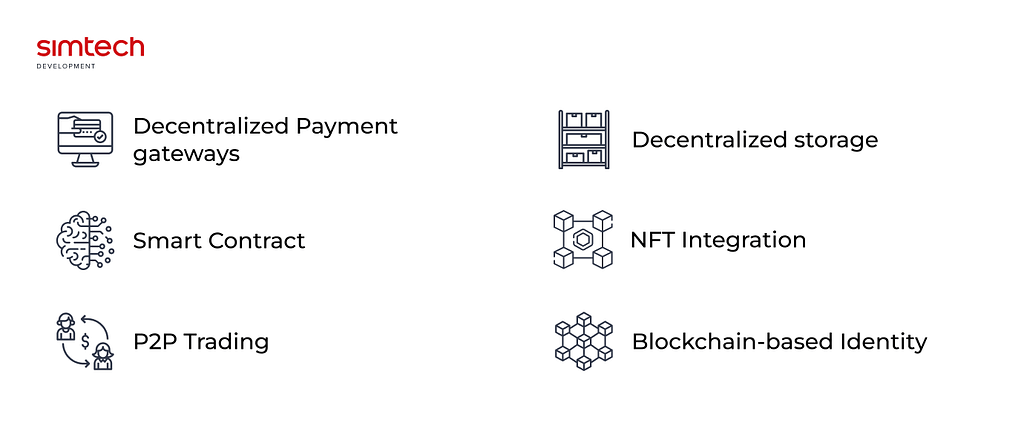
Decentralized Payment gateways
Decentralized payment gateways are platforms or systems that enable peer-to-peer transactions without the need for intermediaries or central authorities. These gateways utilize blockchain technology to facilitate security and transparency.
Traditional payment gateways often involve currency conversions and high fees, whereas decentralized gateways can enable direct peer-to-peer transfers in various cryptocurrencies, bypassing the need for intermediaries.
To connect decentralized payment gateways, online entrepreneurs can follow these steps:
- Research and select suitable decentralized payment gateways: There are various decentralized payment gateways available in the market. Entrepreneurs should research and select the ones that align with their business requirements, such as transaction fees, supported cryptocurrencies, user experience, security features, etc.
- Integrate the chosen payment gateway into their website or platform: Online entrepreneurs need to integrate the decentralized payment gateway into their Web3 website or platform. This involves implementing the necessary APIs or plugins provided by the payment gateway provider.
- Configure payment settings: Next step is to configure the payment settings according to your preferences. This includes setting up the supported cryptocurrencies, transaction fees, payment confirmation requirements, and other relevant parameters.
- Provide multiple payment options: While decentralized payment gateways are gaining popularity, it is essential to offer multiple payment options to cater to different customer preferences. Alongside decentralized options, entrepreneurs should also include traditional payment gateways like credit cards, PayPal, or other popular online payment methods.
- Test and optimize the payment flow: It is crucial to thoroughly test the payment flow to ensure a seamless experience for customers. Entrepreneurs should conduct regular testing and optimization to identify and fix any issues or bottlenecks in the payment process.
Smart Contract
Smart contracts are used for escrow, which facilitates secured transactions while eliminating intermediaries.
Developing a smart contract can be challenging, especially for individuals who are new to programming or blockchain. Smart contracts require a solid understanding of programming languages, particularly Solidity for Ethereum-based contracts. Additionally, developers need to have a good grasp of blockchain concepts, security considerations, and the specific Web3 platform on which the smart contract will be deployed.
Furthermore, ensuring the accuracy and security of a smart contract is crucial, as any bugs or vulnerabilities can have significant consequences, including financial losses. Thorough testing, auditing, and following best practices are necessary to minimize risks.
P2P Trading
This enables buyers and sellers to interact directly without intermediaries. One popular blockchain platform for implementing P2P trading features is Ethereum. Ethereum provides a robust platform for smart contracts and decentralized applications (dApps). By utilizing Ethereum’s capabilities, developers can build decentralized eCommerce stores that enable P2P trading.
Decentralized storage
Decentralized storage is a feature that allows storing data in a decentralized manner, utilizing blockchain technology and peer-to-peer networks instead of relying on a centralized server. In the context of a web3 store, decentralized storage can provide improved security, reliability, and privacy.
One popular decentralized storage solution is the InterPlanetary File System (IPFS). IPFS is a distributed file system that aims to make the web more decentralized. It uses a content-addressable system, where each file is given a unique hash, making it easy to retrieve data regardless of where it is located in the network.
NFT Integration
We all know how NFTs are gaining popularity in the digital world, and integrating them with e-commerce websites will open up enormous opportunities in the online marketplace. Web3 NFTs allow for the ownership of unique digital assets on the blockchain, and they come with several important features for an ecommerce store. You can learn more about NFT stores from our recent article.
Blockchain-based Identity
Blockchain-based identity on a web3 ecommerce store refers to the use of a decentralized identity system built on a blockchain network to verify and authenticate users on the ecommerce platform.
In a traditional ecommerce store, users typically create accounts with email addresses and passwords. However, with blockchain-based identity, users can create and manage their identities using cryptographic keys stored on a blockchain network. This offers several advantages such as enhanced security, privacy, self-sovereign identity management and user control. It also reduces the duplication of data across different websites.
Andrey, CTO at Simtech Development
Web3 Tools and Frameworks
Web3 tools and frameworks are software libraries, tools, and frameworks built to facilitate the development of decentralized applications (DApps) on the Web3 or the decentralized web. These tools and frameworks provide the necessary functionality and abstractions to interact with blockchain networks, manage user identities, handle smart contracts, and perform other tasks related to Web3 development. One notable application of Web3 technology is its integration into the blockchain ecommerce platform. Here are a few popular tools, including Web3 frameworks:
Ethereum
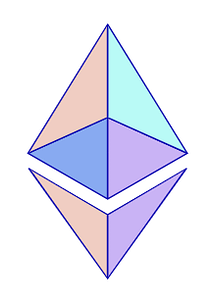
Ethereum is a decentralized, blockchain-based platform that supports the development of smart contracts and DApps. It has its own set of tools and frameworks, including Solidity (a programming language for smart contracts), Remix (an integrated development environment), Truffle (a development framework), and Web3.js (a JavaScript library for Ethereum integration).
IPFS

InterPlanetary File System is a distributed file system that enables peer-to-peer sharing of files and content-addressable storage. It allows developers to build decentralized applications by storing and serving content directly from distributed networks.
Embark
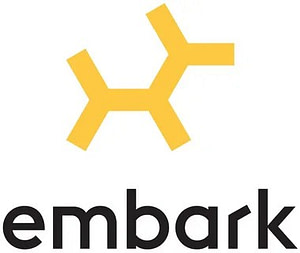
Embark is a development framework specifically designed for Ethereum DApp development. It provides an easy way to develop, deploy, and test smart contracts and DApps. Embark also integrates with IPFS and includes a web server for development and deployment purposes.
OpenZeppelin

OpenZeppelin is an open-source Web3 framework for building secure and auditable smart contracts on Ethereum. It includes reusable, community-audited smart contract components that help developers write secure smart contracts and build DApps more efficiently.
Polkadot.js
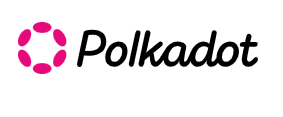
Polkadot.js is a collection of libraries and tools for building an application on the Polkadot network. It provides JavaScript APIs and UI components for interacting with Polkadot-based blockchains, managing accounts, and handling smart contracts.
Truffle Suite

Truffle Suite is an integrated development environment and development framework for Ethereum. It includes Truffle, a development environment, Ganache, a personal blockchain for testing, and Drizzle, a collection of front-end libraries for building Ethereum DApps with React.
Web3.js

Web3.js is a JavaScript library that provides an interface to interact with Ethereum and other compatible blockchains. It allows developers to integrate DApps with the blockchain, manage user identities, and interact with smart contracts.
Hardhat

A development environment and framework for building and testing smart contracts on Ethereum. It provides a configurable build pipeline, automated testing, and task automation.
These are just a few examples of the many tools and frameworks available for Web3 development. The choice of tools depends on your specific requirements, the underlying blockchain platform, and your preferred programming language.
How to create a Web3 Ecommerce Platform in 10 Steps
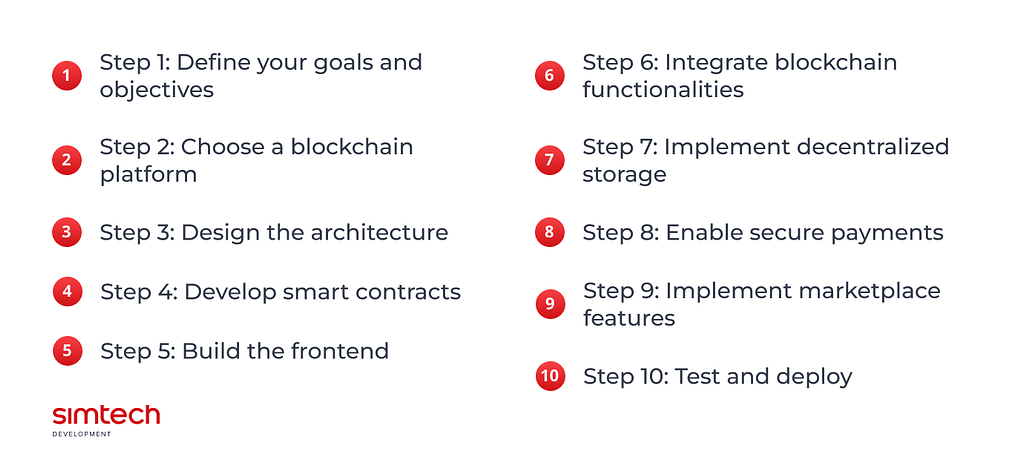
Creating a Web3 Ecommerce platform involves leveraging the capabilities of blockchain and decentralized applications. Here are 10 steps to help you get started on how to create a Web3 website:
Define your goals and objectives
Clearly identify what you want to achieve with your Web3 Ecommerce platform. Determine your target audience, product offerings, and any unique features you want to incorporate.
Choose a blockchain platform
Select a suitable blockchain platform that aligns with your project’s requirements. Ethereum is a popular choice due to its smart contract functionality, vast developer community, and established infrastructure. Other platforms like Polkadot and Binance Smart Chain are also worth considering.
Design the architecture
Outline the architecture of your Web3 Ecommerce platform. Define the components, such as the frontend interface, backend logic, storage, payment system, and blockchain integration. Consider scalability, security, and user experience in your design.
Develop smart contracts
Create smart contracts that govern the logic of your blockchain-based eCommerce platform. Utilize Solidity or other programming languages compatible with your chosen blockchain platform to define functionalities like product listings, order management, and payment settlements.
Build the frontend
Develop an intuitive and user-friendly frontend interface for your Ecommerce platform. Use frameworks such as React, Angular, or Vue.js to create a responsive website where users can browse and purchase products.
Integrate blockchain functionalities
Connect your frontend to the smart contracts deployed on the blockchain. Utilize web3.js or other development libraries to interact with the blockchain, allowing users to create orders, track shipments, and execute secure payments.
Implement decentralized storage
Consider utilizing decentralized storage protocols like IPFS to securely store product images, descriptions, and other relevant data. This ensures data availability and resiliency.
Enable secure payments
Integrate cryptocurrency wallets or payment gateways that support Web3 interactions. Options like MetaMask, WalletConnect, or other popular wallet providers allow users to make payments directly from their wallets with supported cryptocurrencies.
Implement marketplace features
Incorporate essential eCommerce features such as product searching, filtering, reviews, ratings, and order tracking in web3 marketplace development. Implement a reputation system to boost trust and encourage user feedback.
Test and deploy
Thoroughly test your Web3 Ecommerce platform to ensure its functionality, security, and seamless user experience. Once tested, launch your platform on the blockchain, making your marketplace accessible to users worldwide.
Remember, building a Web3 Ecommerce platform is a complex undertaking. Be prepared for ongoing development, maintenance, and updates to keep up with evolving technologies and user requirements. Finally, these measures will allow your business to grow.
How should brands prepare for Web3 eCommerce?
- Invest in blockchain technology: Brands must invest in blockchain in order to embrace Web3 eCommerce. They should explore the unique benefits of decentralized platforms, such as transparency, security, and cost-effectiveness.
- Embrace cryptocurrency payments: Businesses should start accepting cryptocurrencies like Bitcoin, Ethereum, and Litecoin for their products and services. This would increase the customer base and help the brand to stay ahead of its competitors.
- Make the most of NFTs: Non-fungible tokens (NFTs) are an innovative technology in the blockchain space that is becoming increasingly popular. You have a great opportunity to leverage NFTs to create unique products and experiences that their customers can only acquire through blockchain.
- Understand user privacy: With the rise of Web3 eCommerce, user privacy will become an increasingly important factor. Online entrepreneurs should focus on building secure user experiences by utilizing decentralized platforms that ensure data is protected.
- Stay informed: You need to keep up with the latest developments in Web3 eCommerce and blockchain technology. They should read up on industry news and research the market trends to stay ahead of the competition.
What is the future of Web3 in eCommerce?
Web3 eCommerce development has the potential to revolutionize and transform the eCommerce industry. It can enable secure and instant payments, eliminate intermediaries, enhance the supply chain management process, and create a more trustworthy and transparent online environment.
Some of the potential use cases for Web3 eCommerce include digital identity verification, decentralized marketplaces, tokenized assets, and peer-to-peer transactions.
Let’s see the most acute trends in eCommerce web 3.0 development
Metaverse
Web3 technologies and decentralized networks can provide the foundation for building the infrastructure, protocols, and economies within the metaverse.
The metaverse refers to a virtual reality space where people can interact with a computer-generated environment and with each other. It is envisioned as a fully immersive and interactive online space that allows users to access a range of virtual experiences, from socializing with friends to playing games, working, shopping, or attending events. The metaverse aims to merge the physical and digital worlds, enabling individuals to explore and engage in diverse activities within a virtual environment.
By leveraging blockchain technology, users can have greater ownership and control over their virtual assets, while smart contracts can facilitate secure and transparent transactions within the virtual world. Web3 can also enable interoperability among different metaverse platforms, allowing users to seamlessly move their virtual identities, assets, and activities across various metaverse experiences.
Metaverses supported by the Web3 spread represent a future vision of immersive online experiences and a more user-centric internet, embracing decentralized technologies to create a more connected, interactive, and empowering digital landscape.
Artificial Intelligence
Web3 and AI can work together synergistically to enhance various aspects of technology and society. Here are a few ways in which they can complement each other. For example, the marriage of two concepts can lead to the onset of decentralized AI. Traditionally, AI models are trained and deployed on centralized servers owned by companies or organizations. Web3’s decentralized infrastructure can enable the creation of AI models that are distributed across multiple nodes on a blockchain network. This can foster greater transparency, democratize AI access, and prevent single points of failure.
Read more:
Best AI Services For Your ECommerce Business
There are also some challenges that need to be addressed, such as the scalability and interoperability of various blockchain networks, and small communities (which can be corrected with social media connections). With the challenges faced and overcome, we can tell that the future of web3 is promising.
Web3 Use Cases
There are several interesting case studies of companies utilizing Web3 ecommerce technology to improve business processes.
OpenSea
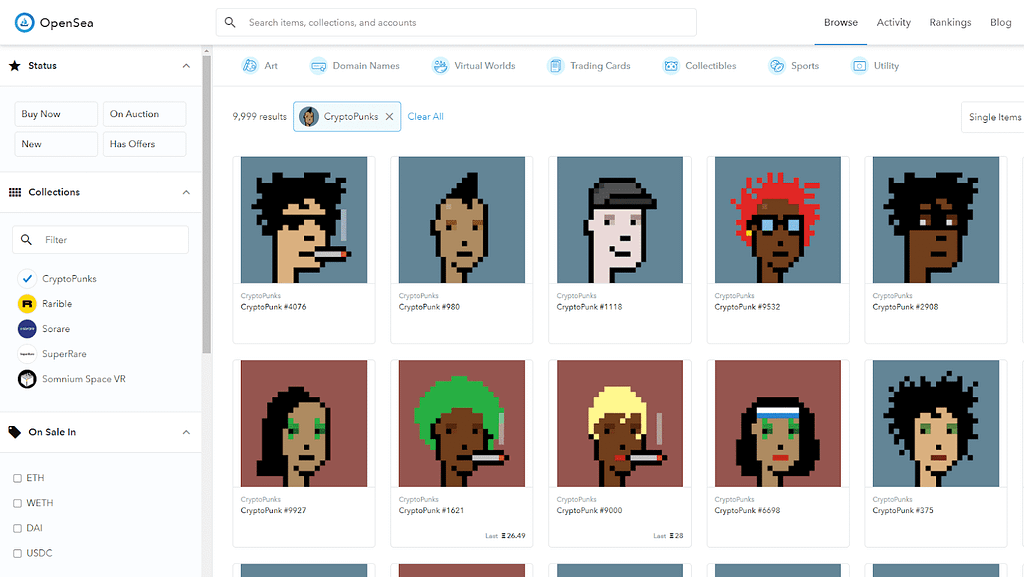
One notable example is OpenSea, a decentralized marketplace for buying, selling, and discovering non-fungible tokens (NFTs). OpenSea runs on the Ethereum blockchain and uses smart contracts to automate much of the buying and selling process. Users can list and sell their NFTs without the need for a centralized intermediary, and people can purchase items securely and transparently.
Origin Protocol
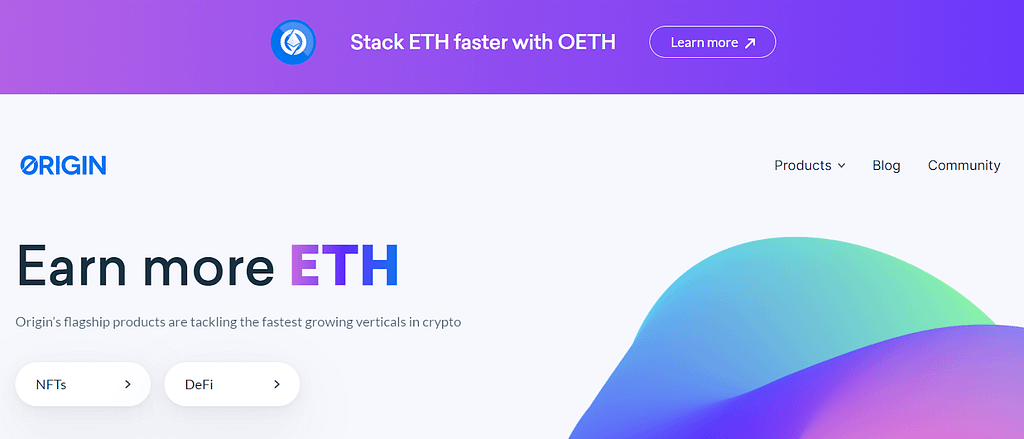
Another interesting case study is Origin Protocol, which has developed a decentralized ecommerce platform that allows buyers and sellers to conduct payments without middlemen. The platform features a rating system that allows buyers to rate sellers and builds their reputation, and a dispute resolution system to help resolve any issues that arise during transactions.
Gnosis Safe
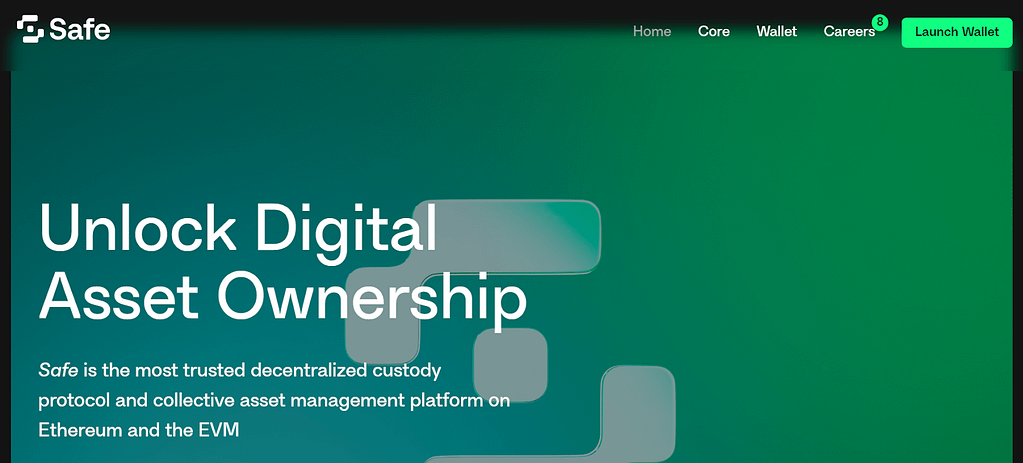
Finally, there is also the example of Gnosis Safe, which offers a secure wallet service for decentralized applications. Customers can store, manage, and transact tokens, NFTs and other digital assets on the Ethereum blockchain. Its interface is user-friendly and allows for easy interaction with the apps.
Seller-Centric Marketplace
In our practice, there was a case with Seller-Centric marketplace. The website owners decided to base their project solely on the crypto payment operations. Our devs integrated the Coinbase payment platform with the marketplace:

Vendors got an opportunity to get paid with Bitcoins or Ethereums by selling their products on this platform.
Summary
To implement Web3 ecommerce development concept, check if you applied the following:
- Smart contracts: Smart contracts automate payments and enforce the terms of the agreement between buyers and sellers. This technology reduces fees and eliminates the need for intermediaries like banks or payment processors.
- Decentralized marketplaces: Decentralized marketplaces are digital environments where buyers and sellers can interact and make transactions without intermediaries or centralized authorities. Blockchain enables the creation of decentralized marketplaces, which improve the efficiency of eCommerce processes.
- Cryptocurrency payments: Cryptocurrency payments are a secure and efficient alternative to traditional payment methods. They can be used to facilitate transactions directly between buyers and sellers, eliminating the need for intermediaries like banks or payment processors.
To ensure the Web3 development in eCommerce will be worth your investment, address to a reliable developer. Simtech Development can help you here.
FAQs about Web3 eCommerce Development
What is Web3 ecommerce?
Web3 eCommerce refers to an ecommerce website which is built on top of blockchain technology, allowing for decentralized payment and greater security for both buyers and sellers.
What are the benefits of a Web3 ecommerce website development?
Some of the key benefits of a Web3 ecommerce website include increased security, faster transaction times, reduced fees, and the ability to bypass the traditional financial system.
How do you create a Web3 ecommerce website?
Some of the key benefits of a Web3 ecommerce website include increased security, faster transaction times, reduced fees, and the There are a few different steps involved in creating a Web3 ecommerce website, including choosing a blockchain platform, selecting an ecommerce platform, integrating both platforms, and creating a user-friendly interface. to bypass the traditional financial system.
What blockchain platforms are best for Web3 ecommerce?
Some of the most popular blockchain platforms for Web3 ecommerce include Ethereum, EOS, and Tron.
What ecommerce platforms are best for Web3 ecommerce?
Some of the most popular ecommerce platforms for Web3 ecommerce include Shopify, WooCommerce, and CS-Cart.
How do you integrate blockchain and ecommerce platforms for Web3 ecommerce?
This will depend on the specific platforms being used, but generally involves using APIs and/or plugins to connect the two platforms.
What can people buy on a Web3 based site?
Some examples of things people can buy on a Web3 based site include digital artwork, collectibles, virtual real estate, decentralized finance (DeFi) assets like tokens or stablecoins, and more.
Can I sell content on a web3 site?
Yes, you can sell content on web3 sites using various decentralized platforms and protocols such as NFT marketplaces, crypto payment gateways, and IPFS hosting. An example of such a platform is Mirror, a decentralized publishing platform where writers and bloggers can publish their content as NFTs and earn cryptocurrency from readers. Users can also vote on articles using cryptocurrency.
What does Web3 landscape include?
Web3 has several key components, including decentralized applications (dApps), decentralized finance (DeFi), non-fungible tokens (NFTs), and decentralized autonomous organizations (DAOs). These components are built on blockchain networks like Ethereum, Polkadot, and others, which provide the foundation for the decentralized web.
What are digital assets of a Web3 site?
Web3 digital assets are digital assets that are created, owned, and transferred on a decentralized network, often using blockchain technology. These assets can be anything from cryptocurrencies like Bitcoin and Ethereum, to digital tokens that represent ownership of a physical asset or access to a service.
In contrast to traditional digital assets that are centrally controlled and owned by a single entity, web3 digital assets are decentralized and owned by the users themselves. This means that ownership and control of these assets is not limited to a single entity or authority, but instead distributed across the network.
Some popular examples of web3 digital assets include:
– Cryptocurrencies like Bitcoin and Ethereum
– Non-fungible tokens (NFTs), which represent unique digital assets like collectible items or art
– Security tokens, which represent ownership of a physical asset like a company or real estate
– Utility tokens, which provide access to a service or product

